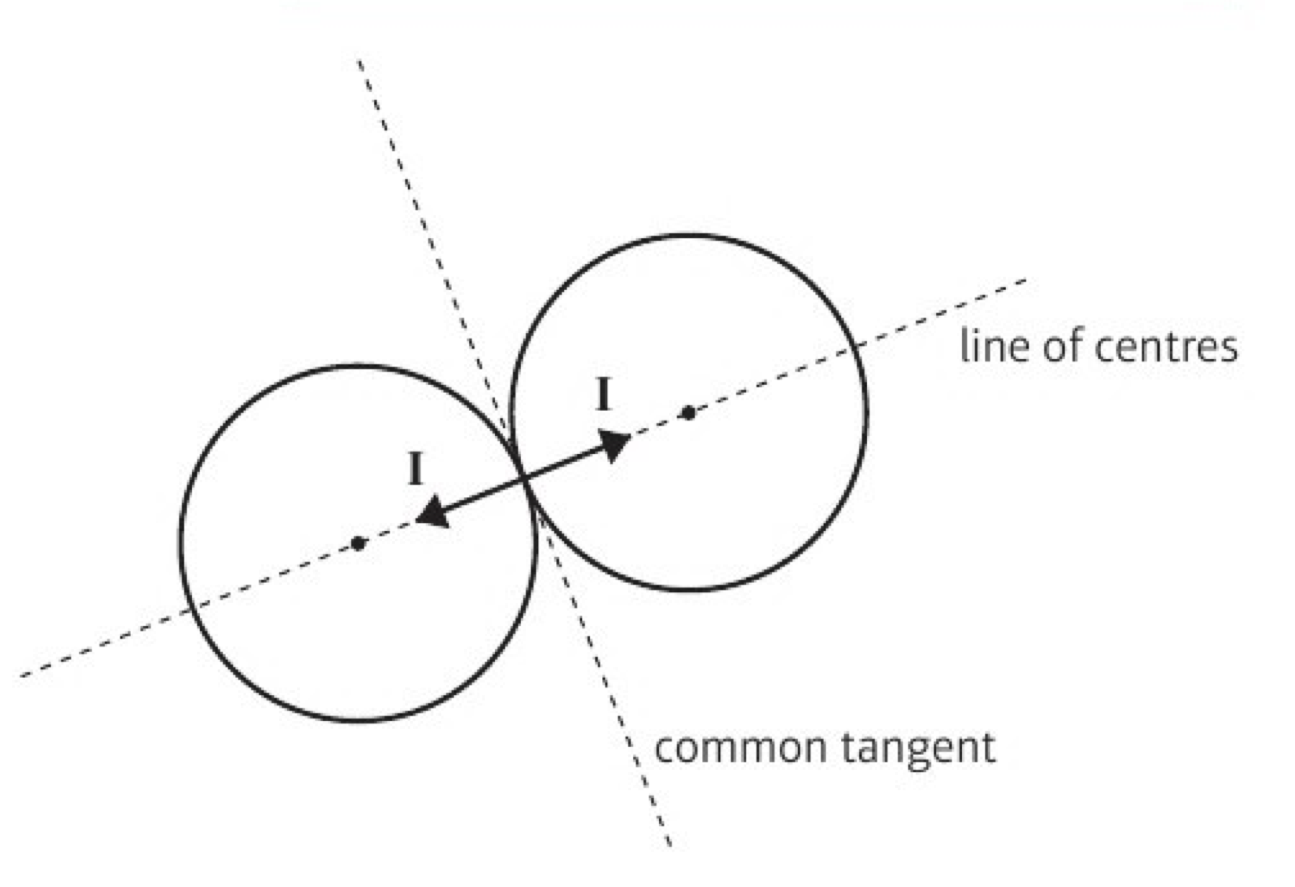ELASTIC COLLISIONS IN 2 DIMENSIONS - CH5
1/7
There's no tags or description
Looks like no tags are added yet.
Name | Mastery | Learn | Test | Matching | Spaced |
|---|
No study sessions yet.
8 Terms
when a particle collides with a smooth flat surface, where does the impulse act?
perpendicular to the surface

what are the components of velocity of the particle
the velocity parallel to the surface is unchanged: vcosß = ucosα
the velocity perpendicular to the surface can be calculated with Newton’s law of restitution: vsinß = eusinα
after eliminating u and v from the above equation, what do you get?
tanß = etanα
what’s the angle of deflection?
the total angle by which the angle of the sphere changes, i.e. α + ß
successive collisions
kind of the same for with one dimension? solve the first one normally, then substitute in the final v from collision 1 into an initial velocity from collision 2. use trig to find angles, they’ll usually form triangles.
what must you watch out for with successive collisions
sometimes e won’r be the same for both surfaces!!!
when two spheres collide, where does impulse act?
along the line of centres, i.e. the line connecting the centres of the two spheres

what are the components of the velocities after the collision?
perpendicular to the line of centres is unchanged
the component parallel to the line will have to be calculated using conservation of momentum